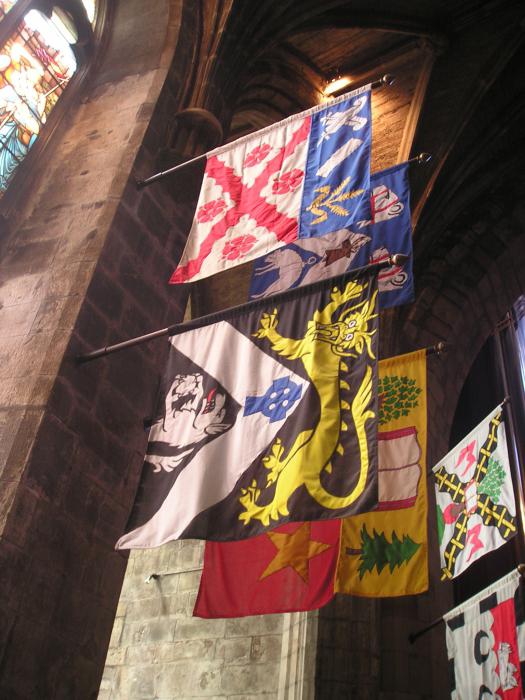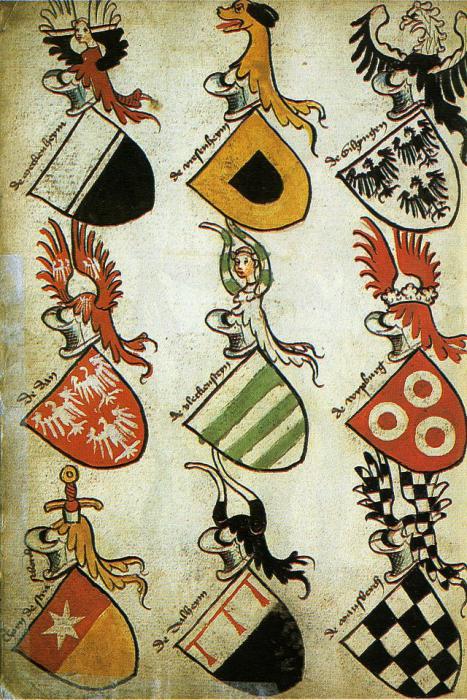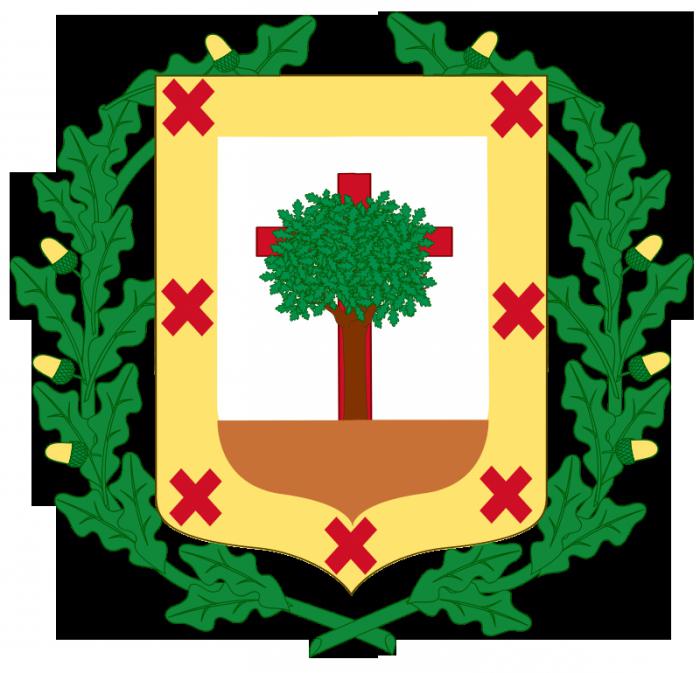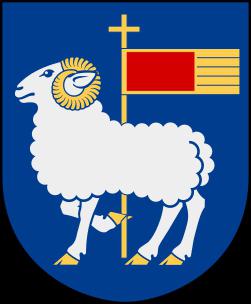
Heraldry has long become a whole cultural and historical phenomenon. Originated as an attribute of chivalry and nobility, today it has been postponed in the city and state symbols.
What is heraldry? Firstly, it is a historical discipline, studying emblems. Secondly, this is the very phenomenon of the imprinted images, which appeared in the Middle Ages.
To understand what heraldry is, you needfind out when it appeared. Identification marks on uniforms were born during the heyday of knighthood in the 12th century between the First and Second Crusades. The nobles began to acquire them for their own identification on the battlefield.
By the XIII century, their symbols appeared in cities, spiritual orders, the bourgeois. An important contribution to the spread of the new phenomenon was made by the chivalric tournaments.
Russian heraldry is considered borrowedWestern European tradition. In Russia, arms could not appear in the customary sense of the word, since originally this art arose as part of a knightly culture that is absent from the Slavs. Nevertheless, even before its appearance in Europe, the Slavic clans and tribes had their own symbols, the role of which was played by pagan totems.

With the adoption of Orthodoxy in Russia were often used as an identification mark of the two-headed eagle, adopted from Byzantium. In addition, the Christian cross became a common symbol.
In the middle of the XVII century, Tsar Alexei Mikhailovich,wishing to compile the genealogy of the Russian princes, turned to the Austrian heraldmaster Lavrenty Khurelevich for help. Important was the "Tsar's titular", compiled in 1672 by the domestic diplomatic department. He summarized the many scattered emblems of different Russian lands in one complete picture. Heraldry of Russia owes much to valuable information from this work.
Under Peter I began to acquire their arms and noble families. "The common arms of the noble families of the Russian Empire," compiled in 1797, included more than 3,000 generic signs.
After the Revolution of 1917 the heraldry of Russia becameauxiliary historical discipline. Today, the active interest of the masses awakens to it. In 1999, the President of the Russian Federation established the Heraldic Council.
A conditional distinguishing sign has a dozen elements. This is a shield, a shield holder, a nest, a burette, and so on.
His entourage largely determines the motto. Traditionally, the inscriptions are in Latin. So, Lermontov's motto was the phrase "Sors mea Jesus" ("My lot is Jesus"). With the help of such phrases, the character that the genus, the city, etc. is attributed to is deciphered. This is another phenomenon that allows one to answer the question of what heraldry is.

The main element of any emblem is the shield. It is he who carries a certain set of figures. A separate explanation requires a variety of forms of shields. They are divided according to nationality.
In the Middle Ages, the image of the shield repeated the formsa real defensive knight's outfit. However, with the disappearance of chivalry as an important combat factor, the images of shields began to receive more unrealistic outlines.
The most common form is the French (quadrangular shield with pointed bases). In the Russian tradition, as in many others, the "French" concept has become the most widespread.
It should be noted also Varangian (triangular), Spanish (quadrilateral with a round base), English (overturned arcs in the head of a triangle) and a German (figured) shield.
The material by which the shield is appliedimage, directly linked to the color palette of the future symbol. No distinctive sign can be perceived separately from its color. Often two such canvases can have the same pattern, but at the same time differ in color, radically changing the sense that the composition carries. Therefore, we can confidently answer the question about what is heraldry: this is art. Coatings and colors of stamped bodies have their own term - tinctures.
Before you take on the actual colors inherent inemblemology, should list the materials with which the image is applied. There are three in total. Without the description of each of them, the presentation of "Heraldry" is impossible.
Enamels - coatings that contain a vitreouspowder and enamel. In addition, when creating the top layer of the aristocratic "label", copper is used as the base of the plate. Enamels were most common in medieval France, whence they migrated to Rus. In our country, and now there are many schools that practice the same applied art (Vologda, Rostov, etc.). There are five colors for enamels.

Red (or scarlet) color means courage,courage and fearlessness. It is created by mixing cinnabar and minium minerals. Red tones are one of those that any national heraldry can boast of. Red flags are one of the most common.
Blue (or azure) color is used to emphasize beauty, grandeur and softness. Azure is made of ultramarine pigment and cobalt metal.
Black color is identified with humility, wisdom and sorrow. To give the coating a black hue, it used to be often burnt ivory.
Green is a symbol of abundance, hope and joy. It is interesting that for giving the image of green shades, vegetative natural greens and chrome are used.
Purple color is considered a sign not only of strength and power, but also of dignity. Used less often than the other four colors. Purple color - a mixture of red dye carmine and lacquer of a pink hue.
If the previous colors are considered canonical, then the use of other palettes is less common. It is not often possible to find enamel of orange, crimson, blood, brown, gray and pink flowers.
The second material is metals. Only two of them are used - gold and silver, which, among other things, are considered noble.
The first of them, proudly called "Kingmetals ", symbolizes wealth, power and nobility. In addition, in the Christian tradition, golden color is a sign of justice, faith, mercy and humility.
Silver with its whiteness always went hand in hand with purity, innocence, nobility and honesty. Anyway, noble metals are tied to all the best that is in the human character.
Gold is considered to be an analog of yellow color, thenHow silver is associated with white dyes. They often cover the arms. Heraldry considers the white shade one of the most common in his art. Artists can receive gold and silver colors with the help not only of metals themselves, but also of brilliant paint.
When decorating the arms, the furs of two animals are traditionally used - protein and ermine.

The ermine fur is depicted on a silver ora golden field in the form of crosses in black. This material symbolizes power. The right to use it had and only have royal and noble dynasties, which differ in their special status in society.
The white cover is found in the form of gray-blue andwhite skins. Unlike the ermine analog, it does not symbolize anything and is depicted most often in helmet-shaped forms. Such material, for example, was rare in Russia.
It is interesting that furs, which were worth their weight in gold in medieval Europe, were used to decorate knightly banners even before the appearance of the actual arms.
A relic of the past can be considered sable fur. For example, it can be found on the banner of the famous family of the Hohenzollerns. It was from this dynasty that the kings of Prussia and the Kaisers of Germany came.
Flowers in heraldry were popular even amongstroyal birth. For example, in England, garlands and bouquets of roses could only be displayed on the emblem of the ruling dynasty. If the noble family did not have a crowned person among her relatives, she could not use more than one rose on her shield.
The War of the Scarlet and White Rose, which erupted in England inXV century, was named precisely by the symbols of two struggling dynasties for power. Lancasters were proud of their red rose, and Yorkie - white. Other hypostases of spiked flowers are known. The unofficial emblem of Bulgaria is a rose of scarlet color, whereas a yellow rose is a symbol of Beijing.
Another famous flower-emblem is the lily. It was the triad of lilies that was the symbol of the Bourbons, who ruled France for several centuries, and the throne of Spain is still occupied.
The thistle of the heraldic symbol has become the symbol of the whole of Scotland. From exotic examples, you can bring chrysanthemum, which is the national flower of Japan since the VII century.
Oak. What does heraldry mean with such a pattern? Since ancient times, it symbolized strength and strength. In addition, on stamps and flags you can often find its fruits - acorns.

The olive tree and in particular its branch are knownas a symbol of peace. This interpretation is rooted in the Bible. According to the Old Testament, the dove brought Noah an olive branch as a sign of the end of the World Flood. For Muslims, olive is considered the tree of life. A pigeon carrying a branch of this tree can be seen, for example, on the coat of arms of Fiji.
Also on the emblems are often found pine and cherry (in Japan - a symbol of wealth and success).
Most often from birds as a visual imageyou can meet an eagle, which in the European tradition speaks of domination and power. It can be seen on the seal of the USA, where he holds an olive branch and thirteen pointed arrows (according to the number of founding states).
Particularly carefully heraldry studies the figuretwo-headed eagle, which can be found in the culture of various nations. It is believed that its origin is due to Sumerian civilization from ancient Mesopotamia. From there he migrated to the Hittites.
The Byzantine Empire also usedtwo-headed eagle for identification purposes. It was from there that he, together with Orthodoxy, was transferred to Russia, where he received a second birth. A fantastic bird flaunted on the emblems of Chernigov, Tver and Moscow principalities.
It was popular among Germans (Germanicunion, the Holy Roman Empire, the Austro-Hungarian Empire, etc.). Today this figure is present on the flags of Albania, Armenia, Russia, Serbia and Montenegro.
Similar to the eagle for its noble qualities falcon, which in the medieval era was associated with the male character traits: nobility, chivalry, courage and strength.
The images of such birds as the heron, the crane and the stork are similar in their meaning. As a rule, they are depicted standing on one leg. Such a composition implies caution and vigilance.
From feathered "labels" are also common crows, ducks and roosters.

The wolf is especially common in Germanmedieval culture. At the same time, this predator has a different allegorical significance. Russian tradition ascribes to him anger, greed and gluttony. In the Bible this mammal is the personification of false prophets. More famous than the rest of its relatives is the capitol wolf, feeding the babies with her milk. It is the symbol of the "eternal city" of Rome. According to legend, she saved the Romulus and Remus brothers from starvation, the first of whom founded the settlement.
Many animals are considered synonymous with meekness andtimidity. These are deer and lambs. Lamb has a special status in the Christian tradition. The Lamb of God in the Gospel is Jesus Christ. Without it, European Catholic heraldry could not do. Symbols from biblical plots have always occupied a prominent place in the Old World.
The horse has an exceptional status as a decoration for the banner, since he was faithful to the companions of the knights. He embodies not only speed and loyalty, but also courage. The horse is always portrayed in profile.

A deer, always considered a noble animal,was popular among the noble families. Warriors could use his image as a proof of intimidation of enemies, because the horned inhabitant of the forests chased away the snake with his smell.
The boar, distinguished by its violent temper, carries in itself such traits of character as courage and fearlessness. As a rule, it is depicted in a profile, but there is only a boar head.
Nowadays the history of heraldry is being actively studied. Since its inception, it has become one of the most famous images of the medieval feudal society. The distinctive sign became a proof of belonging to his family and estate. The decline in interest in the phenomenon began in the eighteenth century. Over time, vivid pictures became a feudal remnant, remaining as a "face" of cities and states.
</ p>>